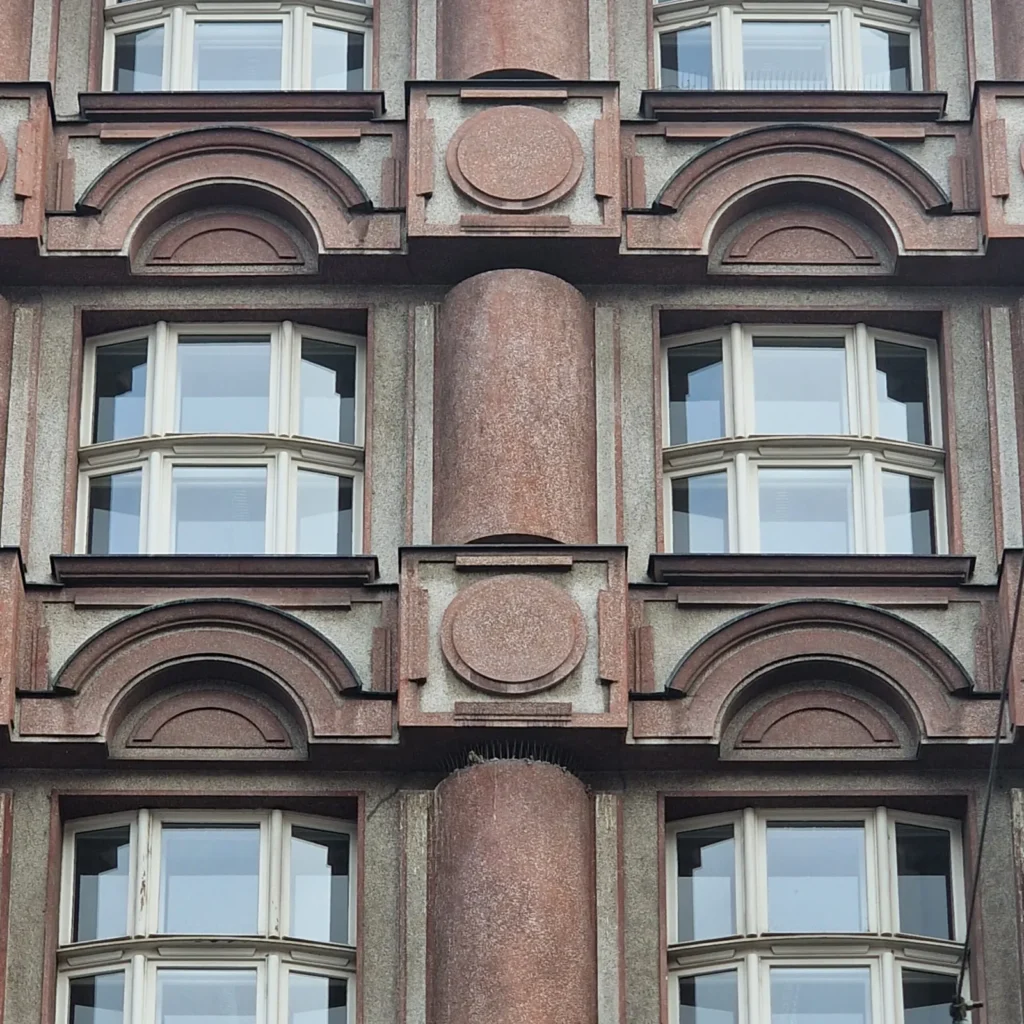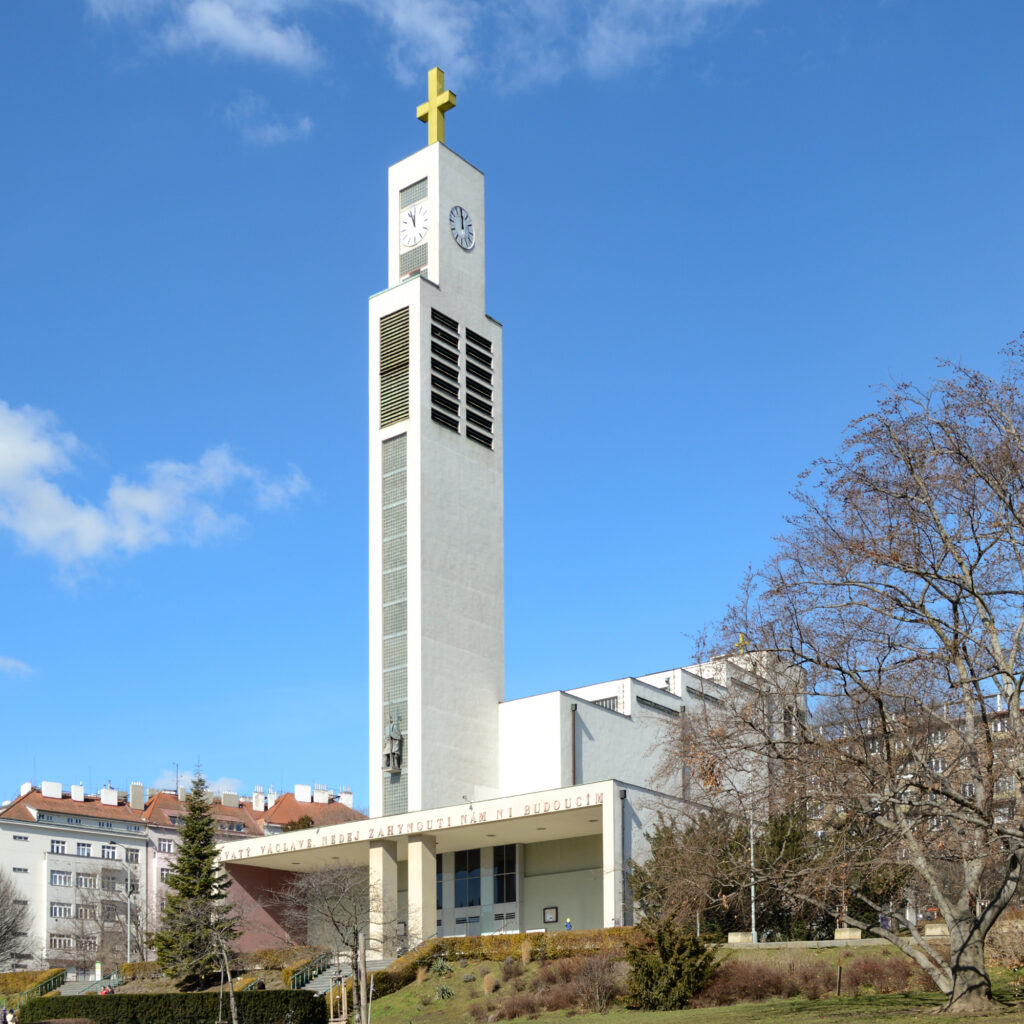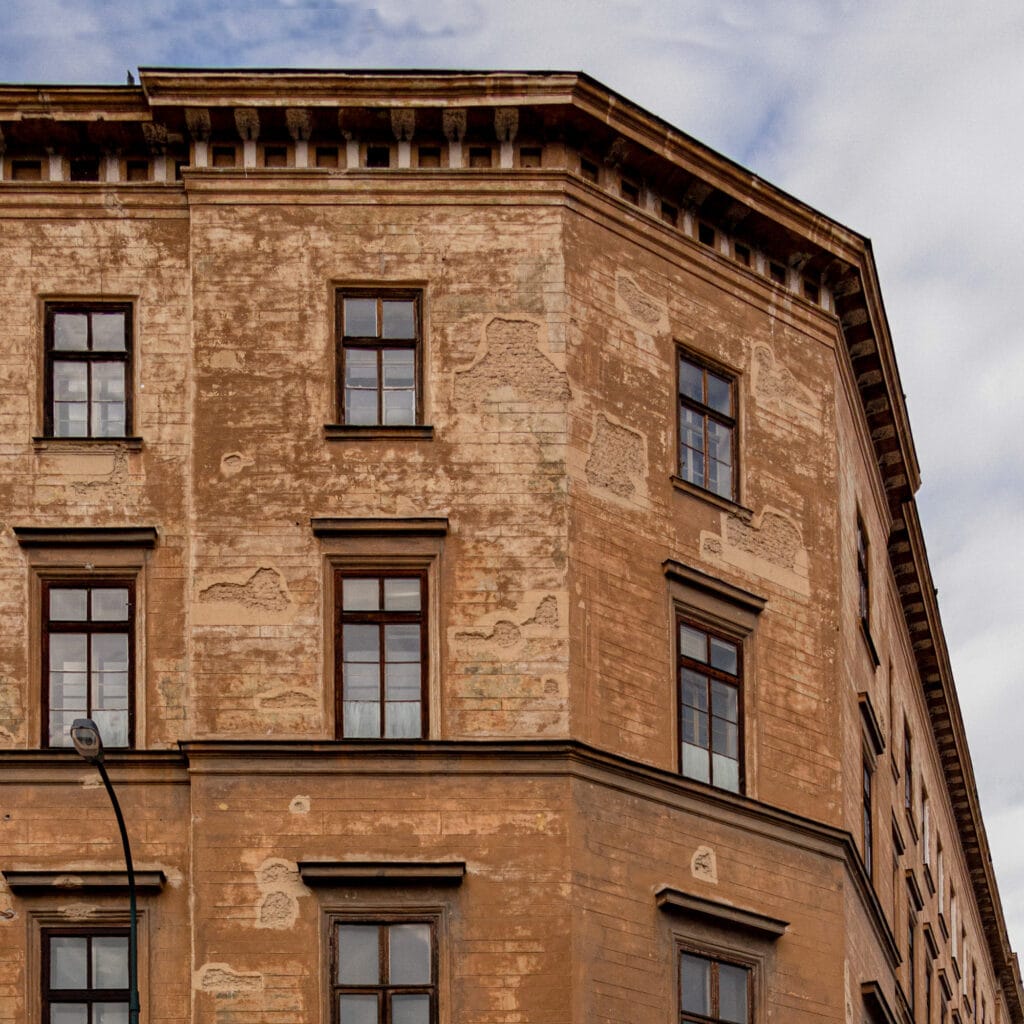The Czechoslovak legion bank
Architect: Josef Gočár
Year of completion: 1923
The Czechoslovak legion bank or Legiobank, began managing the savings of the legionnaires shortly after World War I, which were accumulated during the Russian campaign. Initially, it was located in the Štefánik barracks and then in the hotel U Saského dvora. However, in 1923, it moved to its new Rondocubist building. The architecture of the bank incorporates certain cubist elements, which were softened and rounded in line with Slavic tradition. The relatively narrow yet massive facade facing Na Poříčí Street may give the impression of being assembled like a child’s puzzle. Arches, cylinders, and circular plates are complemented by visual art in the form of four heads by Jan Štursa, representing the most significant battlefields where our legionnaires fought, such as Zborov or Vouziers in France. Above these heads, there is a long frieze by Otto Gutfreund depicting the post-war return of the legionnaires and their future lives. The sculptural facade, executed in subdued national colors, unusually extends above the vertical gable of the neighboring building U Zlatého slunce.
Architect Josef Gočár conceived the interior of the building as a gesamtkunstwerk, or a comprehensive work of art, where the design extends to the smallest details. He himself designed a range of furniture elements for the building, including colorful railings and various types of lighting fixtures. This is best exemplified by the bank hall itself – from the glazed trilobite skylight to the adorned series of bank counters and the red-white mosaic on the floor. It is no wonder that Rondocubism is often referred to as the style of Legiobank.





